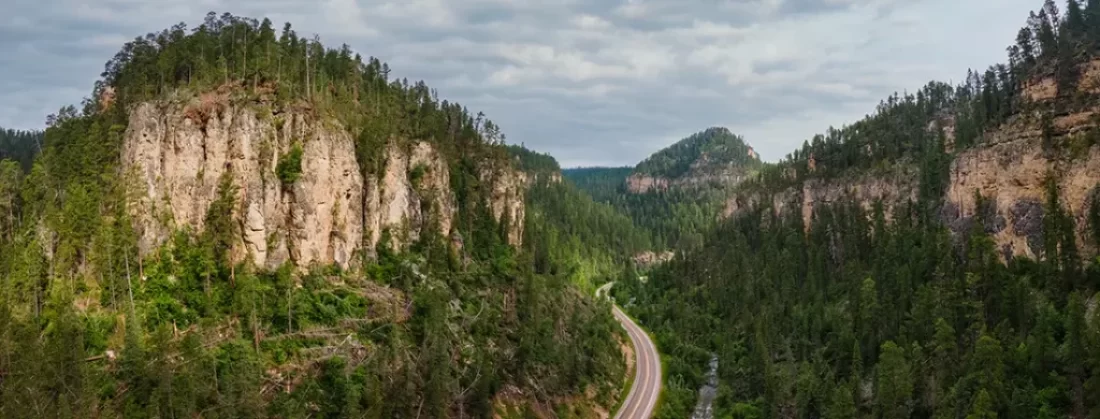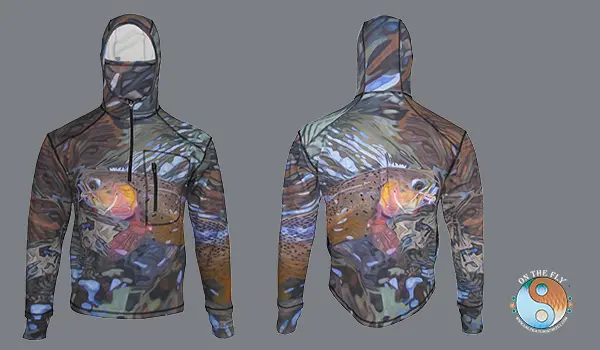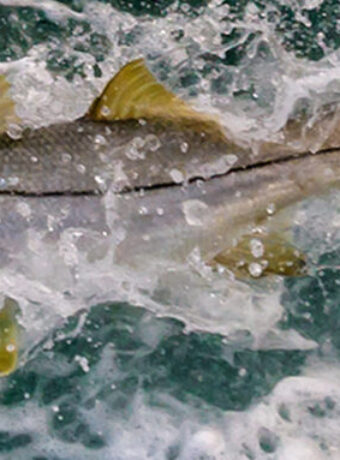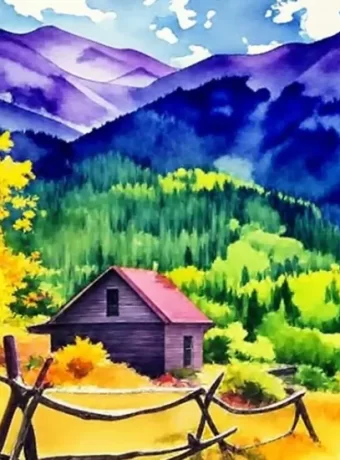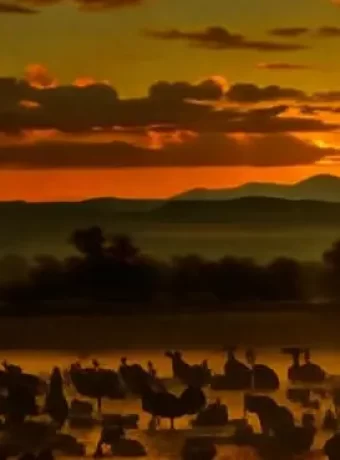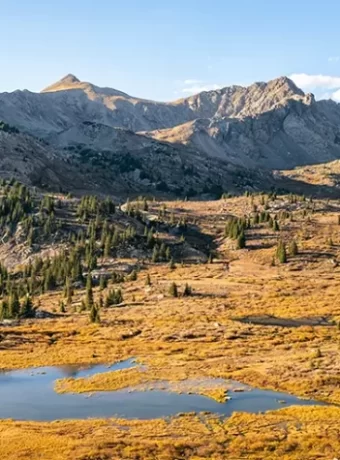Explore the Wonders of South Dakota State Parks: A Complete Guide
South Dakota State Parks offer a breathtaking array of natural wonders, from the rugged Badlands to the serene lakes of the Glacial Plains. These parks are more than just scenic spots; they’re gateways to adventure, history, and the untamed spirit of the American West. Whether you’re an avid hiker, a wildlife enthusiast, or simply seeking a peaceful retreat, South Dakota State Parks have something special in store for every visitor. As we dive into the diverse landscapes and unique experiences offered by South Dakota State Parks, you’ll discover why these protected areas are treasured by locals and tourists alike. From the iconic bison herds of Custer State Park to the hidden gems tucked away in the state’s lesser-known corners, we’ll explore the natural beauty, recreational opportunities, and rich cultural heritage that make these parks an essential part of the Mount Rushmore State’s identity.
Table of Contents
The Crown Jewel: Custer State Park
When it comes to South Dakota State Parks, Custer State Park stands out as the crown jewel. Located in the heart of the Black Hills, this 71,000-acre park is a testament to the state’s commitment to preserving its natural heritage.
Wildlife Wonders
One of the park’s main attractions is its renowned bison herd. With nearly 1,300 bison roaming freely, Custer State Park offers visitors a chance to witness these majestic creatures in their natural habitat. But bison aren’t the only wildlife you’ll encounter here. The park is also home to pronghorn antelope, mountain goats, bighorn sheep, and a variety of bird species.
Scenic Drives and Hiking Trails
The park boasts some of the most scenic drives in the country. The 18-mile Wildlife Loop Road is a must-do, offering stunning views and frequent wildlife sightings. For a more challenging route, take on the Needles Highway, a 14-mile stretch that winds through towering granite spires. Hiking enthusiasts will find plenty to love in Custer State Park. The 7-mile round trip hike to Black Elk Peak, the highest point in South Dakota, rewards trekkers with panoramic views of four states. For a less strenuous option, the 1.5-mile Sylvan Lake Shore Trail offers beautiful views of the lake and surrounding rock formations.
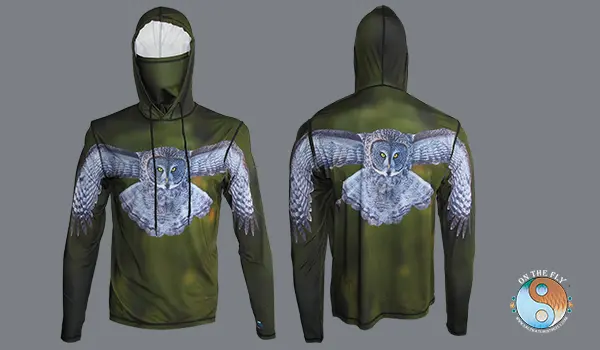
Sun Protective Performance Graphic Hoode-Great Grey Owl
Text content
Explore Spearfish Canyon State Park
Spearfish Canyon State Park sits in the northern Black Hills of South Dakota. This state park is famous for its beautiful canyon scenery and waterfalls. The canyon walls rise high above Spearfish Creek. The creek flows through the canyon. It’s a great spot for outdoor activities. Here, you can hike among towering pines. You can cast a fly rod into clear waters. You can even simply relax by the creek. But the real stars of the show are the waterfalls.
Roughlock Falls is a must-see. This waterfall tumbles 50 feet down the canyon wall. A well-maintained trail leads you right to it. It’s an easy hike. So it’s perfect for families with kids. A little further down the canyon, you’ll find Spearfish Peak. Although the peak is not directly in the state park, you can see it from many points along the canyon. This makes for a breathtaking backdrop. It’s a great place to snap a few photos.
If you enjoy hiking, Spearfish Canyon has a trail for you. From easy strolls to more challenging climbs, there’s something for everyone. The Eleventh Hour Gulch Trail offers a good workout. This four-mile trail takes you through a mixed-grass prairie. Then it winds into a pine forest. The views from the trail are awesome. The Roughlock Falls Trail is a shorter option. This easy trail takes you right to the base of the falls.
Fly fishing is a popular activity in Spearfish Creek. Brown trout and rainbow trout swim in its waters. The creek offers a good challenge for seasoned anglers. But beginners can have fun too. Several access points along Spearfish Canyon Scenic Byway let you get to the creek easily. Just make sure you have a South Dakota fishing license.
Spearfish Canyon State Park offers picnic areas. Many have tables and grills. These are great spots to relax. Enjoy a meal while listening to the sounds of the creek. You’ll also find campgrounds in the area. Although, the state park itself doesn’t have campsites. This lets you extend your stay in this beautiful canyon. Remember to pack layers. Because the weather in the Black Hills can change quickly. Also, be prepared for crowds. Spearfish Canyon is a popular spot. Especially during the summer and fall. But with its beauty, it’s easy to see why.
Exploring the Badlands: Badlands National Park
While technically not a state park, no discussion of South Dakota’s natural wonders would be complete without mentioning Badlands National Park. This otherworldly landscape of eroded buttes, pinnacles, and spires offers a stark contrast to the lush forests of the Black Hills.
Unique Geology and Paleontology
The Badlands were formed over millions of years through deposition and erosion, creating a layered landscape that tells the story of Earth’s history. The park is also one of the world’s richest fossil beds, where ancient mammals like saber-toothed cats once roamed.
Hiking and Wildlife Viewing
Hiking trails range from easy boardwalks to more challenging backcountry experiences. The Door Trail and Window Trail offer short, accessible hikes with dramatic views, while the Notch Trail provides a more adventurous trek with ladder climbs and narrow ledges. Wildlife viewers might spot bison, bighorn sheep, prairie dogs, and even endangered black-footed ferrets. The park is also home to a variety of bird species, making it a paradise for birdwatchers.
Hidden Gems: Lesser-Known South Dakota State Parks
While Custer State Park and Badlands National Park often steal the spotlight, South Dakota State Parks offer many hidden gems that are worth exploring.
Palisades State Park
Located near Garretson in eastern South Dakota, Palisades State Park is a geological wonder. The park features striking Sioux quartzite formations, some towering up to 50 feet above Split Rock Creek. Rock climbers flock here for the challenging routes, while hikers can enjoy scenic trails along the creek.
Good Earth State Park
As the newest addition to South Dakota State Parks, Good Earth State Park at Blood Run offers a unique blend of nature and cultural history. Located southeast of Sioux Falls, this park was once home to the Oneota Indigenous Peoples and is considered one of the oldest sites of long-term human habitation in the United States.
Newton Hills State Park
For a taste of the forest in the prairie state, head to Newton Hills State Park. Located near Canton, this park features densely wooded hills, a rarity in South Dakota. The park offers 6 miles of hiking trails, including a segment of the centennial trail, and is particularly beautiful in the fall when the leaves change color.
Water Recreation in South Dakota State Parks
South Dakota’s lakes and rivers provide excellent opportunities for water-based recreation. Many state parks offer facilities for boating, fishing, and swimming.
Lewis and Clark Recreation Area
Situated on the Missouri River near Yankton, the Lewis and Clark Recreation Area is a water lover’s paradise. The park offers excellent boating and fishing opportunities on Lewis and Clark Lake, as well as sandy beaches for swimming and sunbathing.
Lake Herman State Park
Located near Madison, Lake Herman State Park is a popular spot for fishing, boating, and swimming. The 1,350-acre lake is stocked with walleye, northern pike, and panfish, making it a favorite among anglers.
Oakwood Lakes State Park
Oakwood Lakes State Park, near Bruce, offers water recreation on a series of glacial lakes. The park is known for its excellent fishing, particularly for walleye and northern pike. It also provides opportunities for canoeing, kayaking, and swimming.
Winter Activities in South Dakota State Parks
South Dakota State Parks aren’t just for summer enjoyment. Many parks offer winter activities that showcase the beauty of the snowy season.
Cross-Country Skiing and Snowshoeing
Several parks, including Custer State Park and Newton Hills State Park, offer groomed trails for cross-country skiing and snowshoeing. These activities provide a peaceful way to explore the winter landscape and observe wildlife.
Ice Fishing
Many of South Dakota’s state park lakes offer excellent ice fishing opportunities. Lake Herman State Park and Oakwood Lakes State Park are particularly popular for this winter sport.
Snowmobiling
For those seeking more excitement, some parks allow snowmobiling on designated trails. The George S. Mickelson Trail, which runs through the Black Hills, is open to snowmobiles in the winter months.
Camping in South Dakota State Parks
Camping is one of the best ways to fully immerse yourself in the natural beauty of South Dakota State Parks. From basic tent sites to RV hookups and even camping cabins, there’s an option for every type of camper.
Custer State Park Camping
Custer State Park offers several campgrounds, each with its own unique appeal. Sylvan Lake Campground, nestled among granite crags, is particularly scenic. Blue Bell Campground is known for its proximity to wildlife, while Game Lodge Campground offers easy access to the park’s visitor center.
Badlands National Park Camping
While not a state park, Badlands National Park offers unique camping experiences. Cedar Pass Campground provides stunning views of the Badlands formations, while the Sage Creek Campground offers a more primitive experience in the park’s wilderness area.
Year-Round Camping Options
Some South Dakota State Parks offer year-round camping for the truly adventurous. Farm Island Recreation Area near Pierre and Lewis and Clark Recreation Area both keep select campsites open throughout the winter months.
List of South Dakota Recreation Areas
- Angostura Recreation Area
- Bear Butte Lake Recreation Area
- Big Sioux Recreation Area
- Burke Lake Recreation Area
- Buryanek Recreation Area
- Chief White Crane Recreation Area
- Cow Creek Recreation Area
- Farm Island Recreation Area
- Fisher Grove Recreation Area
- Fort Randall Recreation Area
- Hartford Beach Recreation Area
- Indian Creek Recreation Area
- Lake Alvin Recreation Area
- Lake Cochrane Recreation Area
- Lake Herman Recreation Area
- Lake Hiddenwood Recreation Area
- Lake Louise Recreation Area
- Lake Poinsett Recreation Area
- Lake Thompson Recreation Area
- Lake Vermillion Recreation Area
- Lewis & Clark Recreation Area
- Little Moreau Recreation Area
- Mina Lake Recreation Area
- North Point Recreation Area
- North Wheeler Recreation Area
- Oahe Downstream Recreation Area
- Oakwood Lakes Recreation Area
- Pease Creek Recreation Area
- Pelican Lake Recreation Area
- Pickerel Lake Recreation Area
- Pickerel Lake Recreation Area
- Piedmont Recreation Area
- Platte Creek Recreation Area
- Randall Creek Recreation Area
- Revheim Bay Recreation Area
- Richmond Lake Recreation Area
- Rocky Point Recreation Area
- Roy Lake Recreation Area
- Sandy Shore Recreation Area
- Shadehill Recreation Area
- Snake Creek Recreation Area
- Spring Creek Recreation Area
- Walker’s Point Recreation Area
- West Bend Recreation Area
A lot of these Recreation Areas have decent fly fishing and can be great place to learn the sport.
Historical Significance of South Dakota State Parks
Many of South Dakota’s state parks aren’t just about natural beauty – they also preserve important pieces of the state’s history.
Fort Sisseton Historic State Park
Located in the northeast corner of the state, Fort Sisseton Historic State Park preserves a frontier army outpost from the 1860s. Visitors can explore restored buildings and learn about life on the frontier during the westward expansion.
Good Earth State Park at Blood Run
This park, located southeast of Sioux Falls, protects an important Native American cultural and trading center occupied from about 1300 to 1700 AD. It’s an excellent place to learn about the area’s Indigenous history.
Lake Herman State Park
In addition to its recreational offerings, Lake Herman State Park is home to the Herman Luce Cabin, built in 1871. This restored cabin offers visitors a glimpse into the life of early settlers in the area.
Preserving Nature: Conservation Efforts in South Dakota State Parks
South Dakota State Parks play a crucial role in preserving the state’s diverse ecosystems and wildlife. Various conservation efforts are ongoing to ensure these natural treasures are protected for future generations.
Bison Management
The bison herd in Custer State Park is carefully managed to maintain a healthy population that’s in balance with the available habitat. The annual buffalo roundup, held each September, is not just a tourist attraction but an important management tool.
Prairie Restoration
Many parks, including Good Earth State Park and Newton Hills State Park, are involved in prairie restoration efforts. These projects aim to reestablish native grasslands, providing habitat for a variety of plant and animal species.
Invasive Species Control
Parks across the state work to control invasive plant and animal species that can threaten native ecosystems. Visitors can help by cleaning their boats and gear to prevent the spread of aquatic invasive species between water bodies.
Planning Your Visit to South Dakota State Parks
To make the most of your visit to South Dakota State Parks, it’s important to plan ahead. Here are some tips to help you prepare:
Park Passes and Fees
Most South Dakota State Parks require an entrance license. You can purchase daily or annual passes, with the annual pass offering the best value if you plan to visit multiple parks. Some parks, like Custer State Park, have additional fees.
Reservations
If you plan to camp, it’s advisable to make reservations, especially during the peak summer season. You can make reservations through the South Dakota Game, Fish and Parks website.
Best Times to Visit
While South Dakota State Parks are beautiful year-round, each season offers unique experiences:
- Spring (April-May): Wildflowers bloom and wildlife is active, but weather can be unpredictable.
- Summer (June-August): Peak season with warm weather, ideal for water activities and hiking.
- Fall (September-October): Cooler temperatures and fall foliage make for spectacular scenery.
- Winter (November-March): Snow transforms the landscape, perfect for winter sports enthusiasts.
Safety Considerations
When visiting South Dakota State Parks, always prioritize safety:
- Stay on designated trails and respect wildlife by keeping a safe distance.
- Check weather forecasts and be prepared for rapid changes, especially in the Badlands and Black Hills.
- Carry plenty of water, especially when hiking in the summer months.
- Be aware of potential hazards like steep cliffs, particularly in parks like Palisades and the Badlands.
FAQs about South Dakota State Parks
What is the most popular state park in South Dakota?
Custer State Park is widely considered the most popular state park in South Dakota. Known for its scenic beauty, wildlife, and recreational opportunities, it attracts visitors from all over the world.
How many South Dakota state parks are there?
South Dakota has 13 state parks, along with 43 recreation areas, 5 nature areas, and 69 lakeside use areas. This network of parks and recreation areas covers a diverse range of landscapes across the state.
Do I need a state park pass in South Dakota?
Yes, most South Dakota state parks require an entrance license. You can purchase daily or annual passes, with the annual pass offering the best value if you plan to visit multiple parks throughout the year.
What state park is near the Badlands?
While the Badlands is a National Park, not a state park, the closest state park to the Badlands is Custer State Park. It’s located about 90 miles southwest of Badlands National Park in the Black Hills region.
South Dakota State Parks offer a diverse tapestry of natural wonders, from the rugged beauty of the Badlands to the serene lakes of the eastern prairies. These parks not only preserve some of the state’s most stunning landscapes but also provide a window into its rich cultural and natural history. Whether you’re seeking adventure, relaxation, or a deeper connection with nature, South Dakota State Parks have something to offer every visitor. As we’ve explored, each park has its own unique character and attractions. From the iconic wildlife of Custer State Park to the hidden gems like Palisades State Park, there’s always something new to discover. The parks also play a crucial role in conservation efforts, helping to preserve South Dakota’s diverse ecosystems for future generations. Remember, visiting South Dakota State Parks is not just about seeing beautiful scenery – it’s about immersing yourself in the experience. Whether you’re camping under the stars, hiking a challenging trail, or simply enjoying a peaceful picnic by a lake, these parks offer countless opportunities to create lasting memories. So, as you plan your next outdoor adventure, consider exploring the wonders of South Dakota State Parks. With their stunning landscapes, rich biodiversity, and wealth of recreational opportunities, they truly embody the spirit of the American West and the natural beauty of South Dakota.
